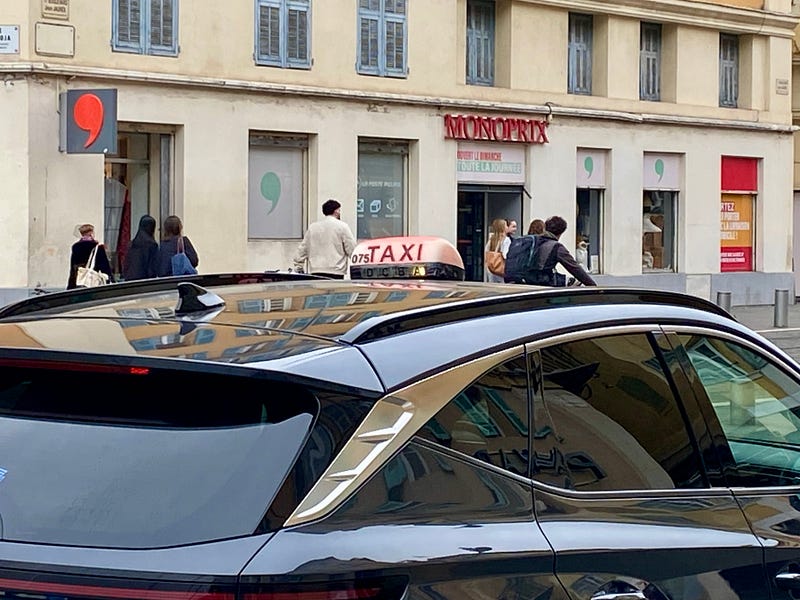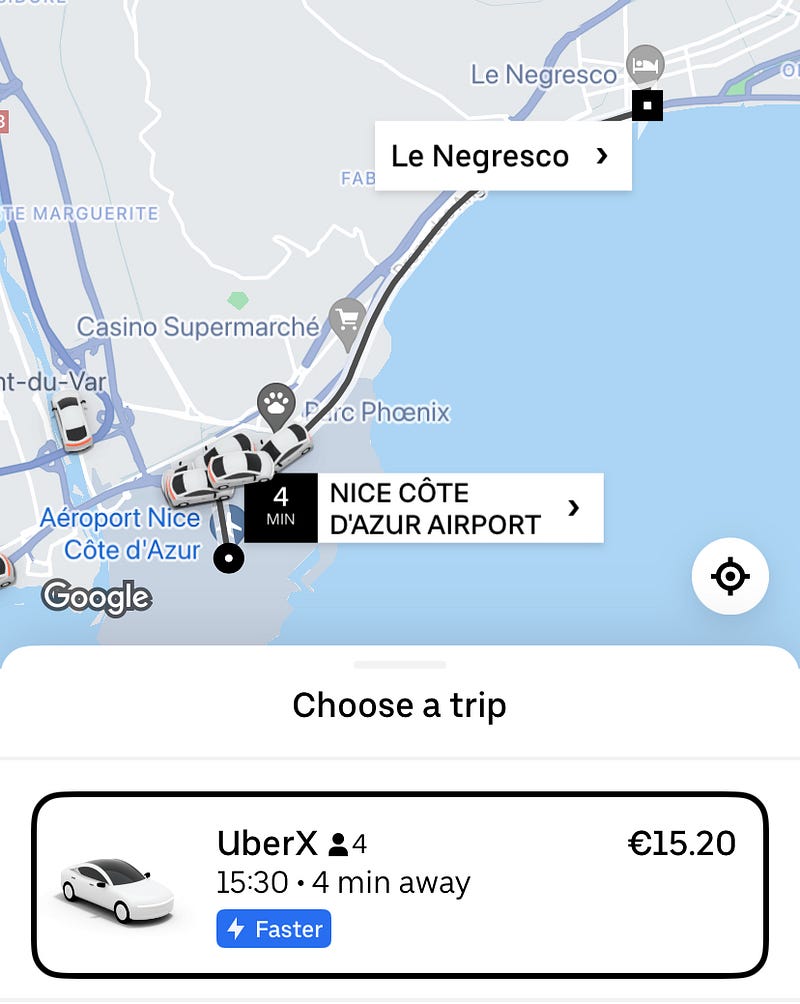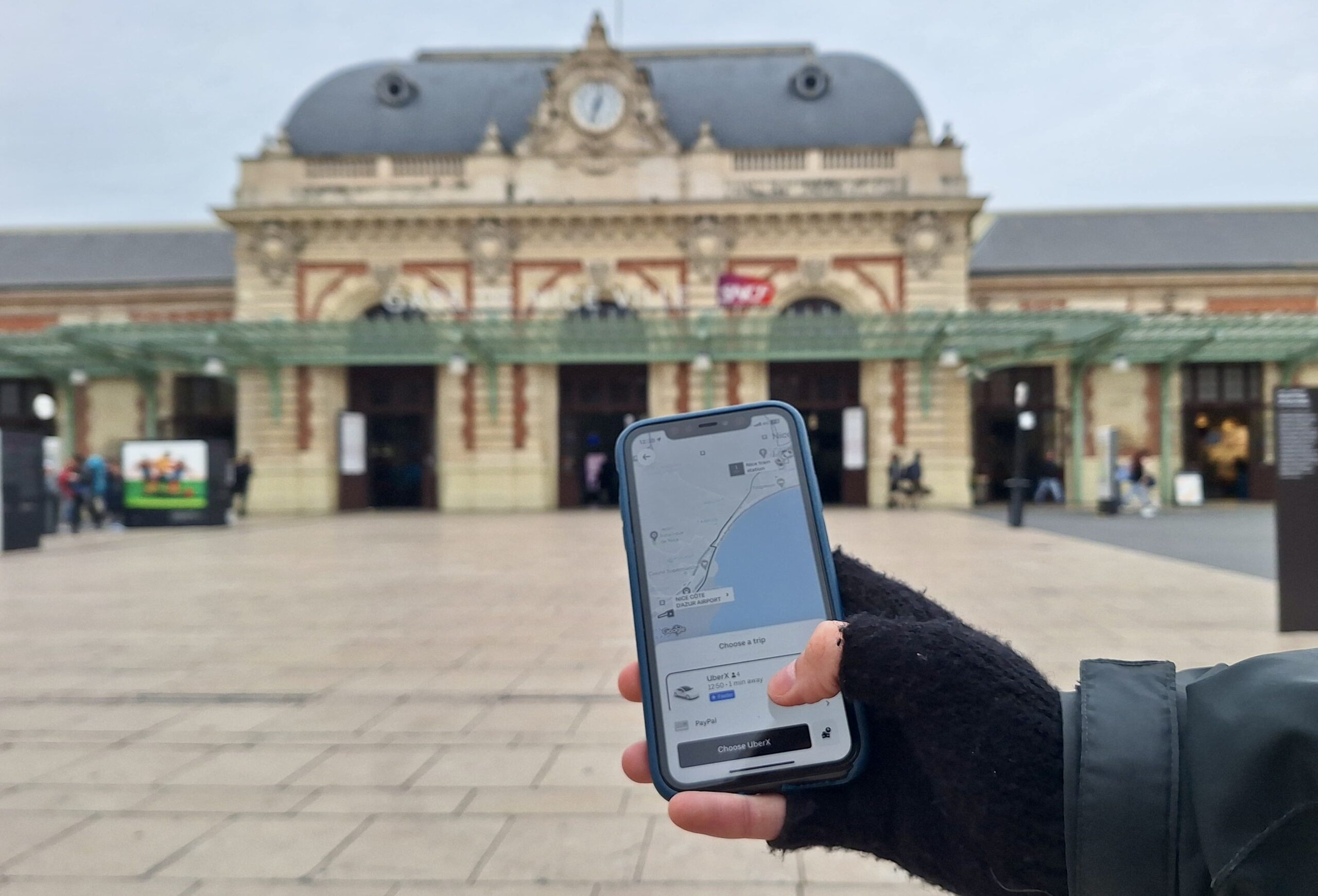The ongoing battle between the ‘traditional’ taxis and the on-demand driver apps, has entered a new era, in which both sides appear powerless.
The union of VTC-drivers of Nice announced a complete blackout between November 21st and 22nd for all fares to and from travelling hubs, mostly focussing on the airport of Nice Côte d’Azur. The announced blackout is the result of a controversial decision by leading ride-sharing platform Uber, to change its commission rate from a set 25%, to a variable percentage that could range between 20 and 45 percent, depending on the journey. The higher rate of commission would most likely occur when trips are booked to airports and train stations. For example, if a ride to the airport costs €10, under this new system, Uber would take approximately €4,50 of the fare. With such a rough increase in commission, one would wonder if becoming a ‘normal taxi driver’ is perhaps more interesting.
Taxi chauffeur versus Uber driver
In France, a distinction is made between official taxi chauffeurs, and people operating as chauffeurs via platforms such as Uber. These drivers are referred to as VTC-drivers (Voiture de Transport avec Chauffeur). In order to obtain a VTC license, which is mandatory for registering as a driver with Uber, a person must meet a number of requirements. Apart from some bureaucratic and fiscal differences, the requirements are practically identical to those needed for an official taxi license. The only difference between the two licenses is that taxi drivers are able to use the blue license plate, can use the ‘taxi’ signage on the roofs of their cars, and can park in special parking spots.

Why is on-demand rideshare so popular?
So, for the customer, what differentiates a taxi chauffeur from a VTC driver? Very simple: fixed rates. Any person who went on holiday and used a taxi, has experienced the anxieties that come with it. Frantic glances at the meter; following the route on your phone; and hoping you won’t get hit with additional costs upon arrival. Meanwhile, the people using apps such as Uber can relax and think about their hotel. The app already shows you the route; you know how trustworthy your driver is, thanks to driver ratings; and most importantly, you know exactly how much you will pay. Arranging a ride via Uber is also much easier than trying to get the attention of a taxi chauffeur, especially at a busy airport. And usually, Uber is cheaper anyways. In Nice, from the airport to the city centre runs on a flat-rate of €32 when taking a taxi. Although prices vary depending on availability, that same trip would cost between 15 and 20 euros when using Uber. A no-brainer for the average customer.

The painful truth about changing commissions
The added value of using Uber in Nice, has led to an overwhelming dominance of the platform. While no exact figures of traditional taxis in Nice could be found, we can be sure that they are vastly outnumbered. According to the president of the VTC union in the Côte d’Azur, approximately 7500 VTC-drivers are active in the region. And with the supply-and-demand of low-fare rides, chauffeurs are forced to use on-demand platforms to salvage some form of income.
Hostages…? Almost
The change to variable commission is particularly painful in tourist cities such as Nice. Being a relatively small city, where most people prefer to walk or use the tram network, the main use for taxis and ride shares in Nice, concerns trips to the airport and train station. “Most of my customers are tourists who go to the airport” one of the strikers said. When asking about his future he shook his head. “What can we do? Every alternative will hurt my wallet”. According to the president of the VTC union, changing to alternative platforms would ultimately lead to the same measures being taken on that app.


